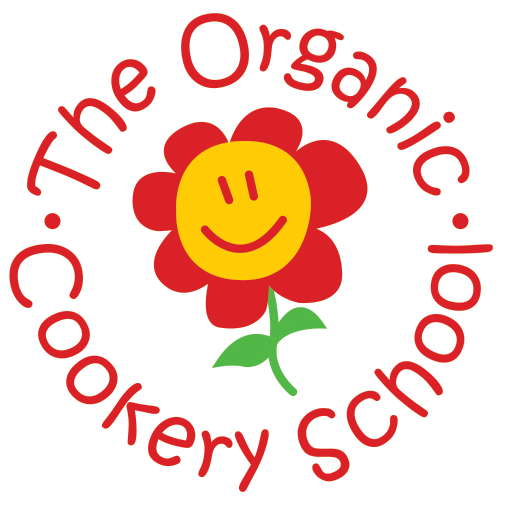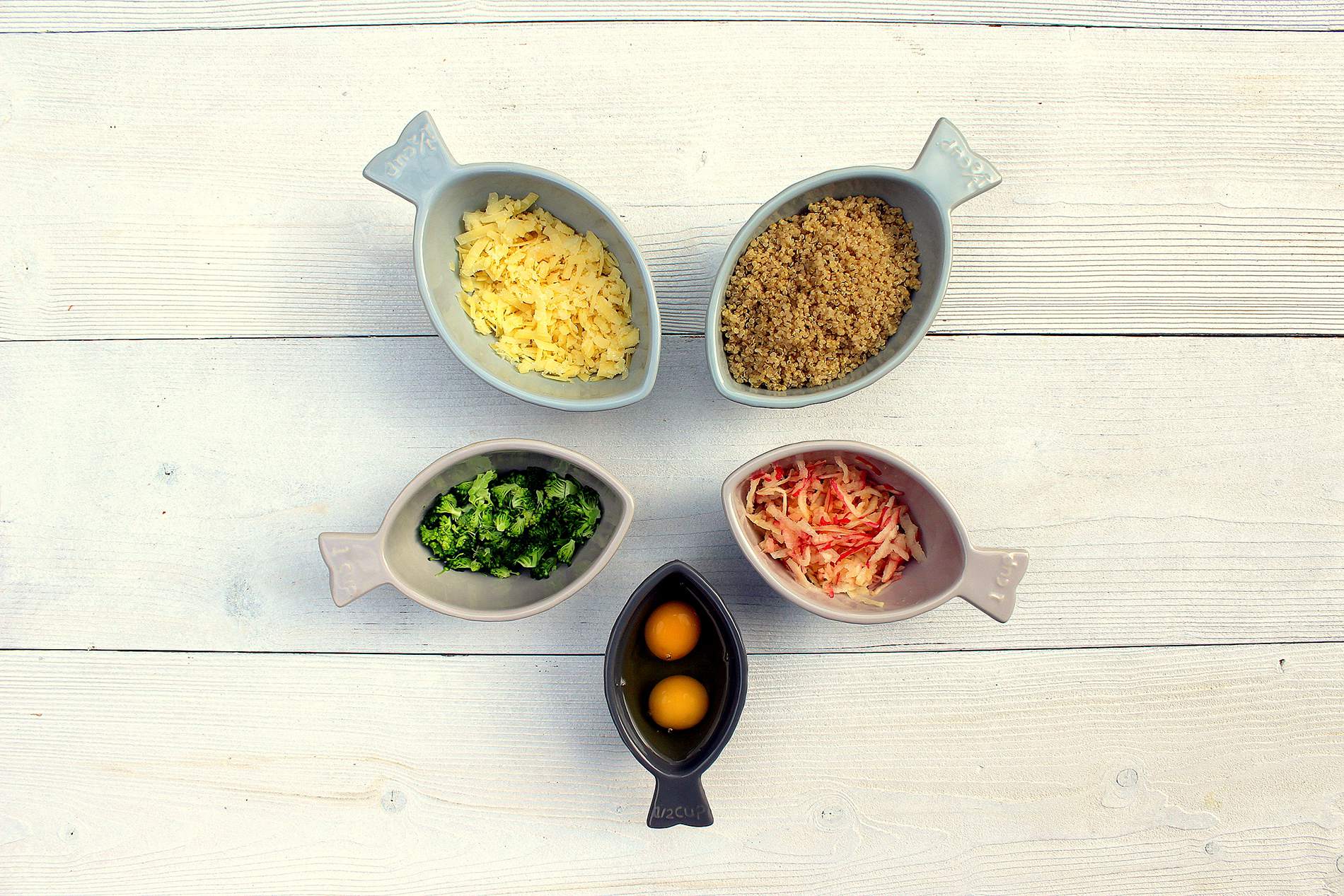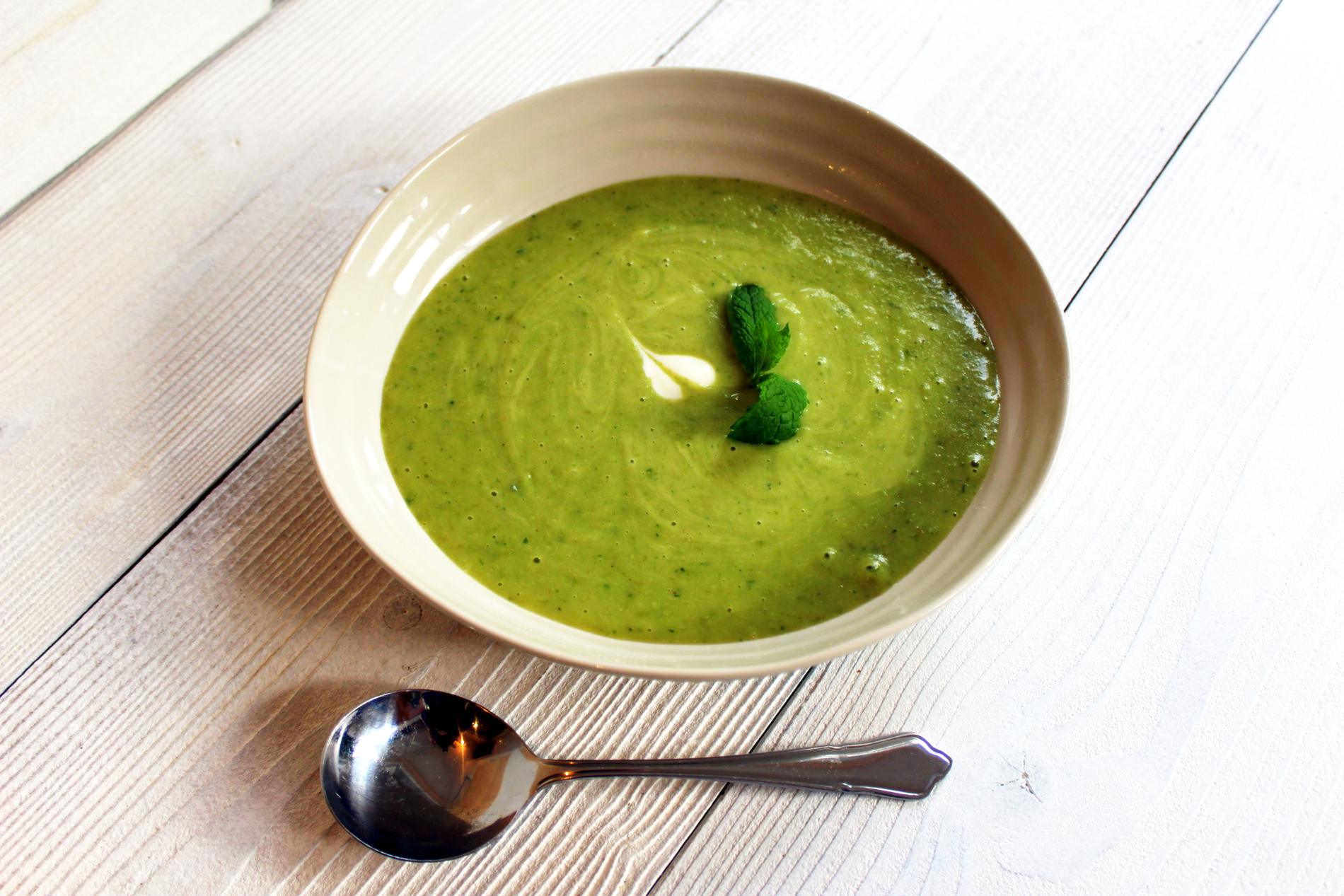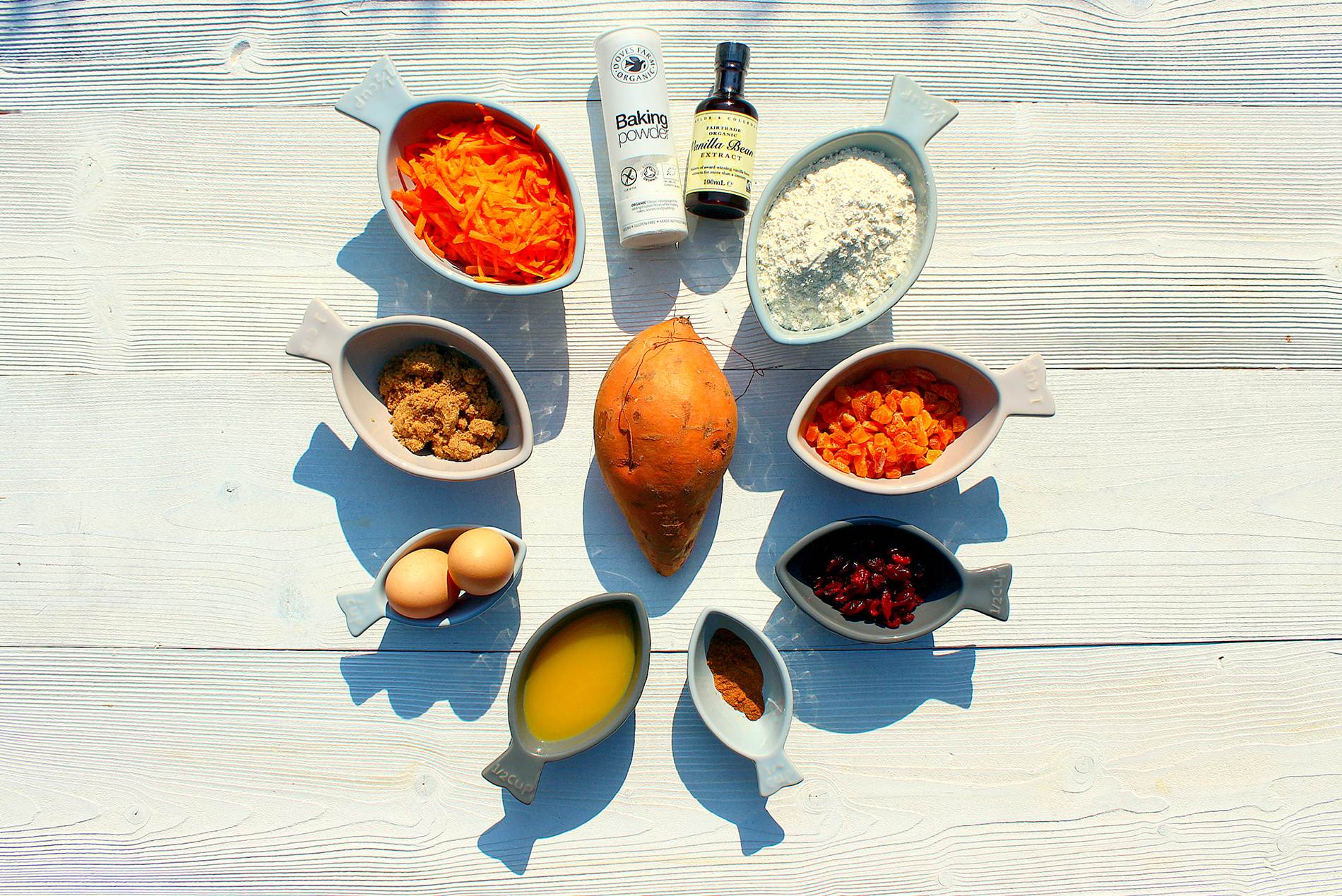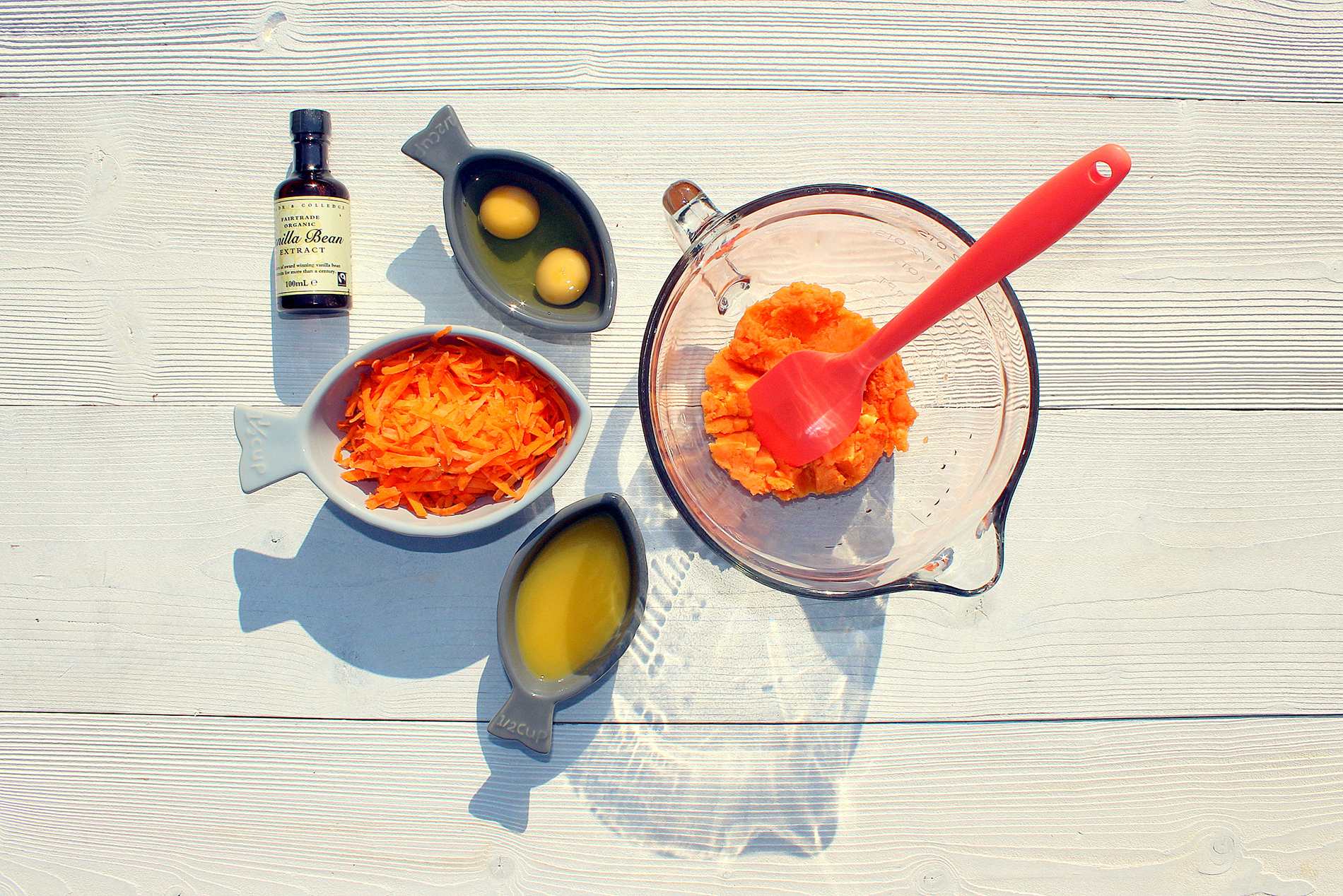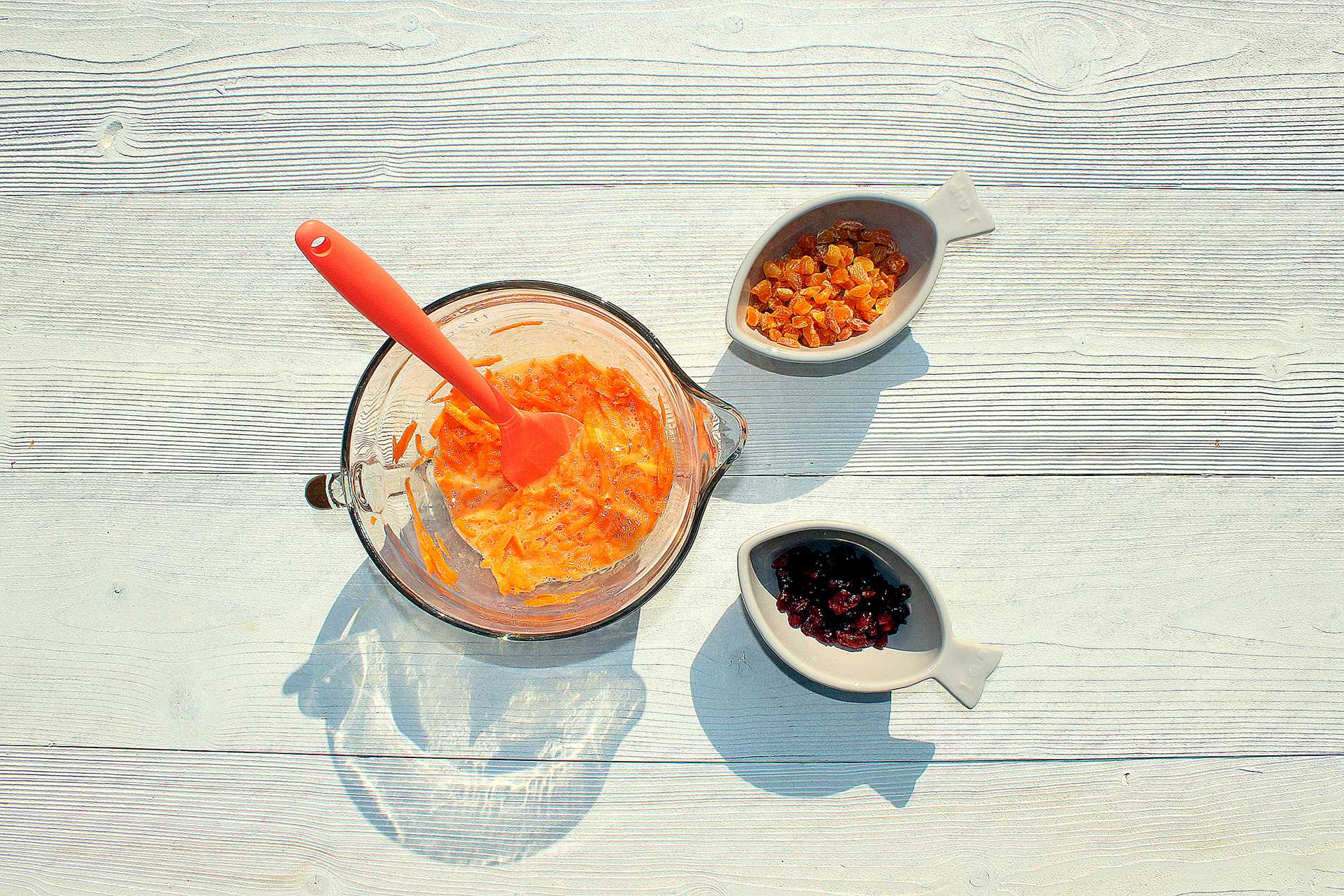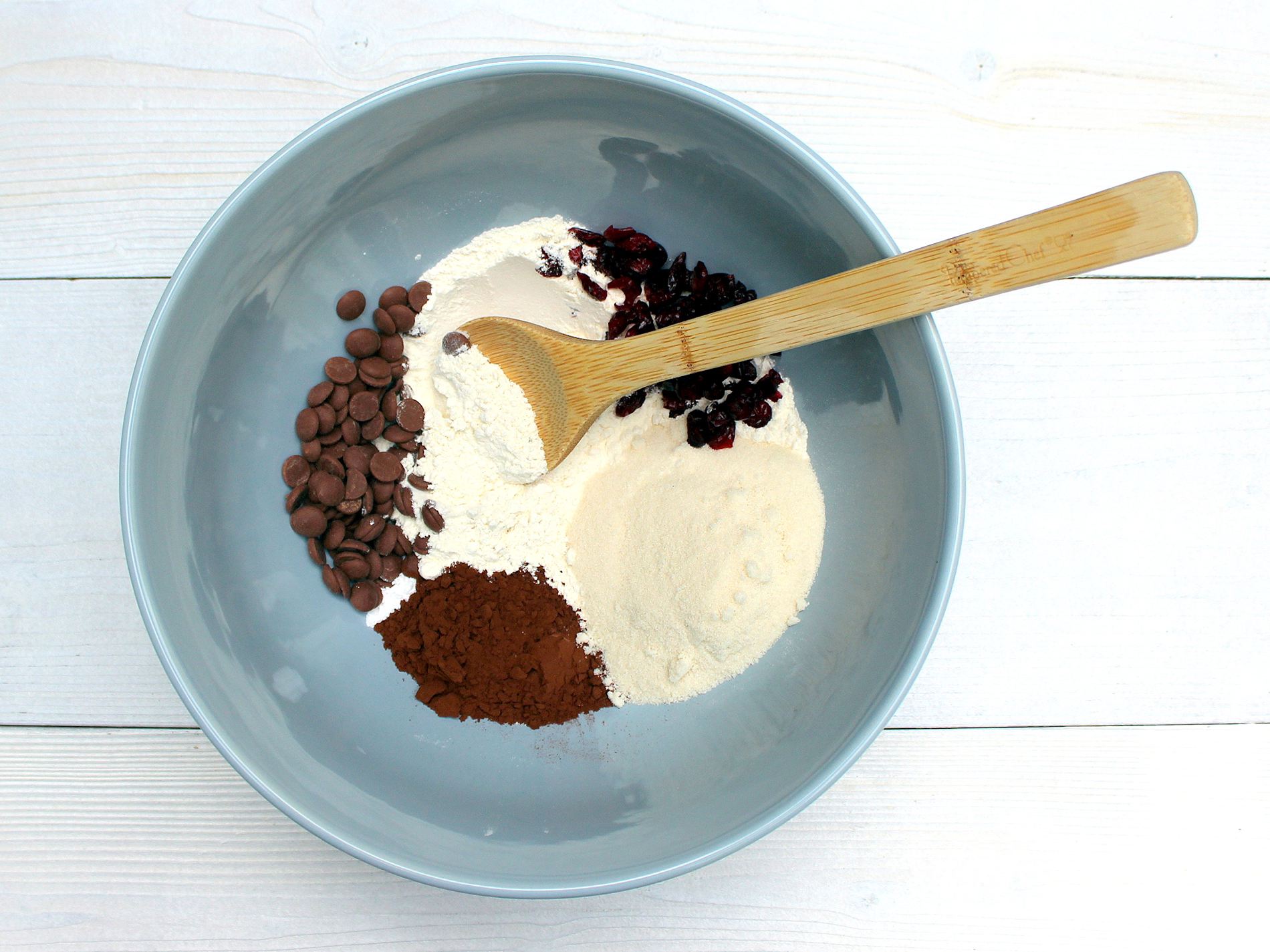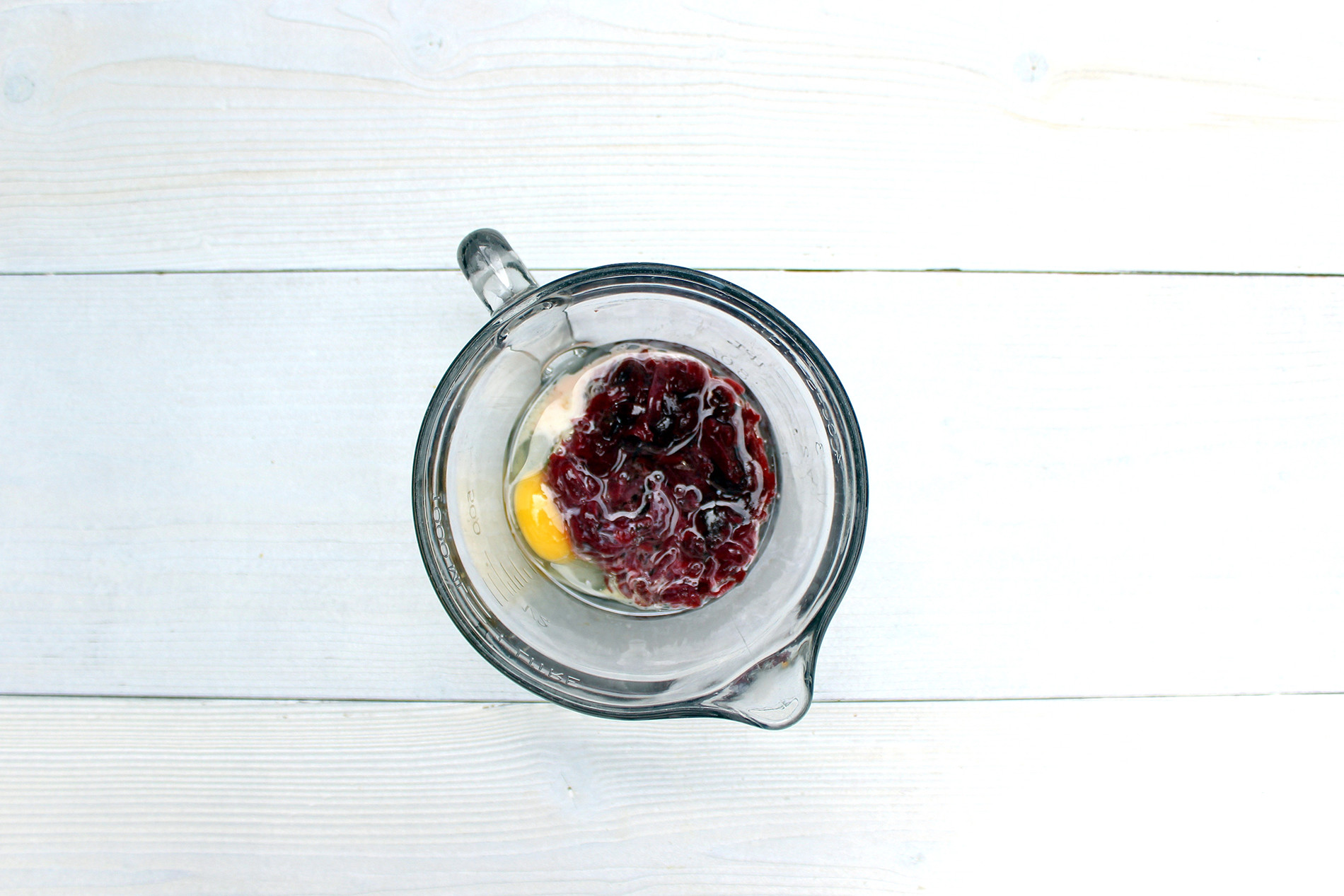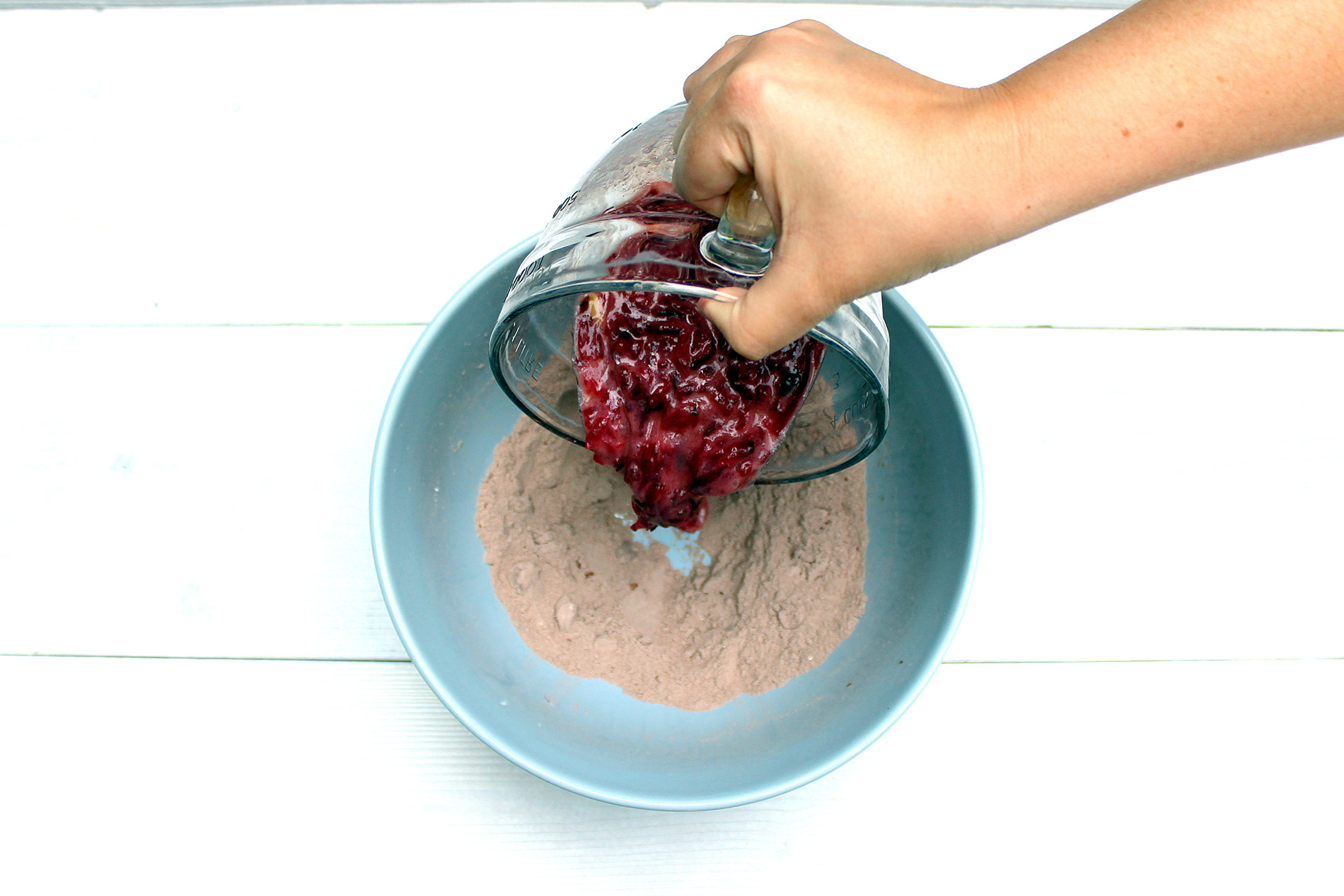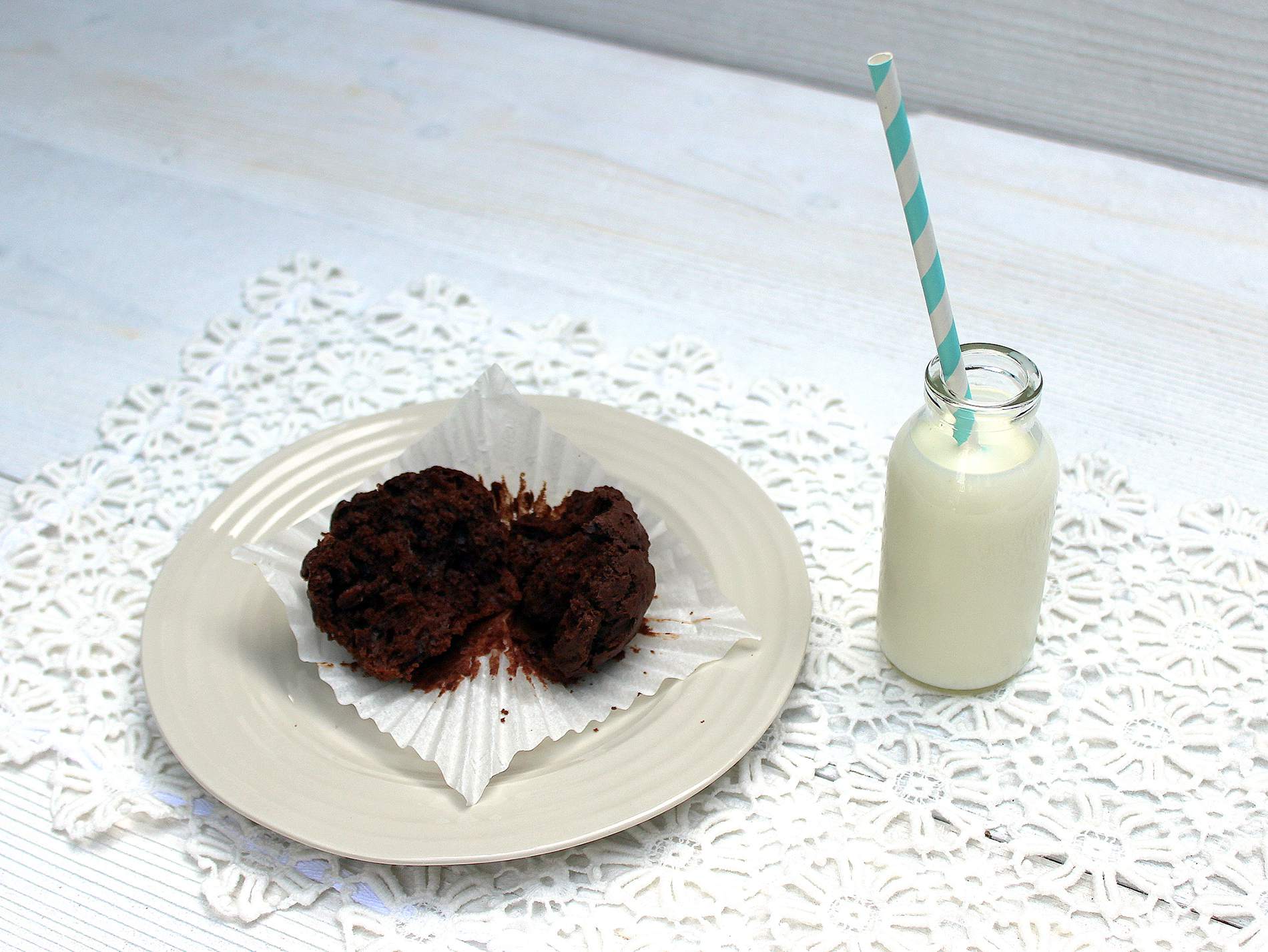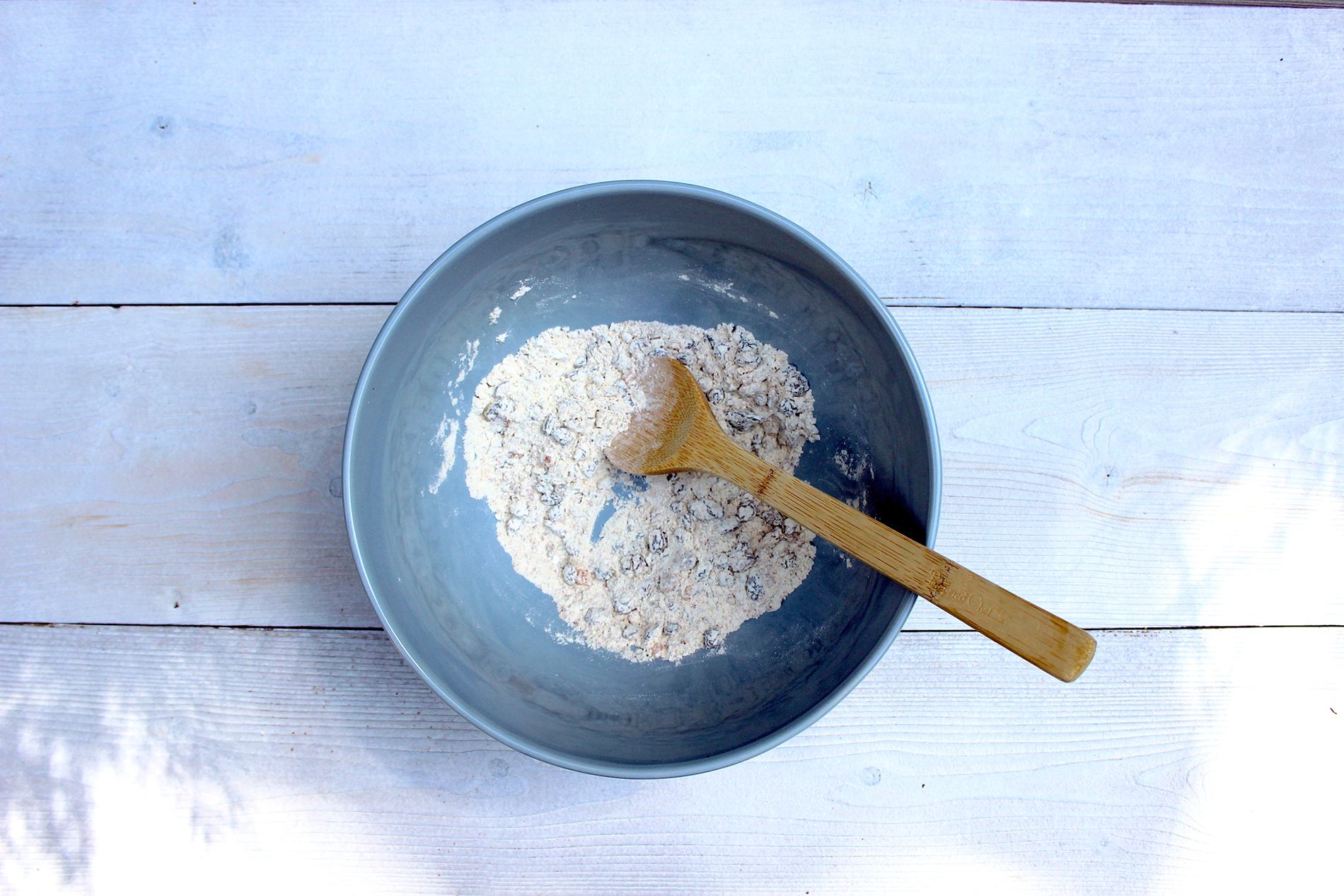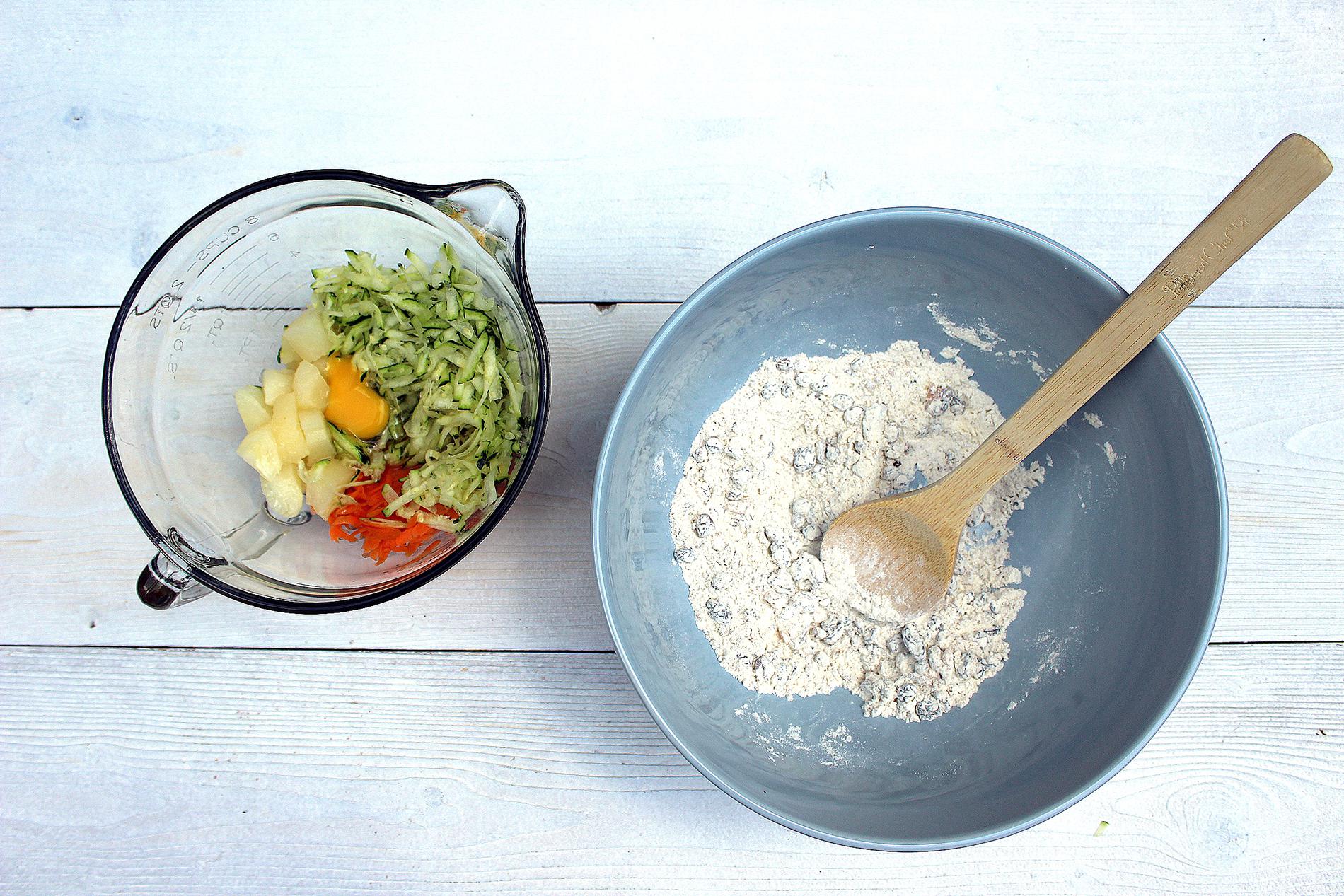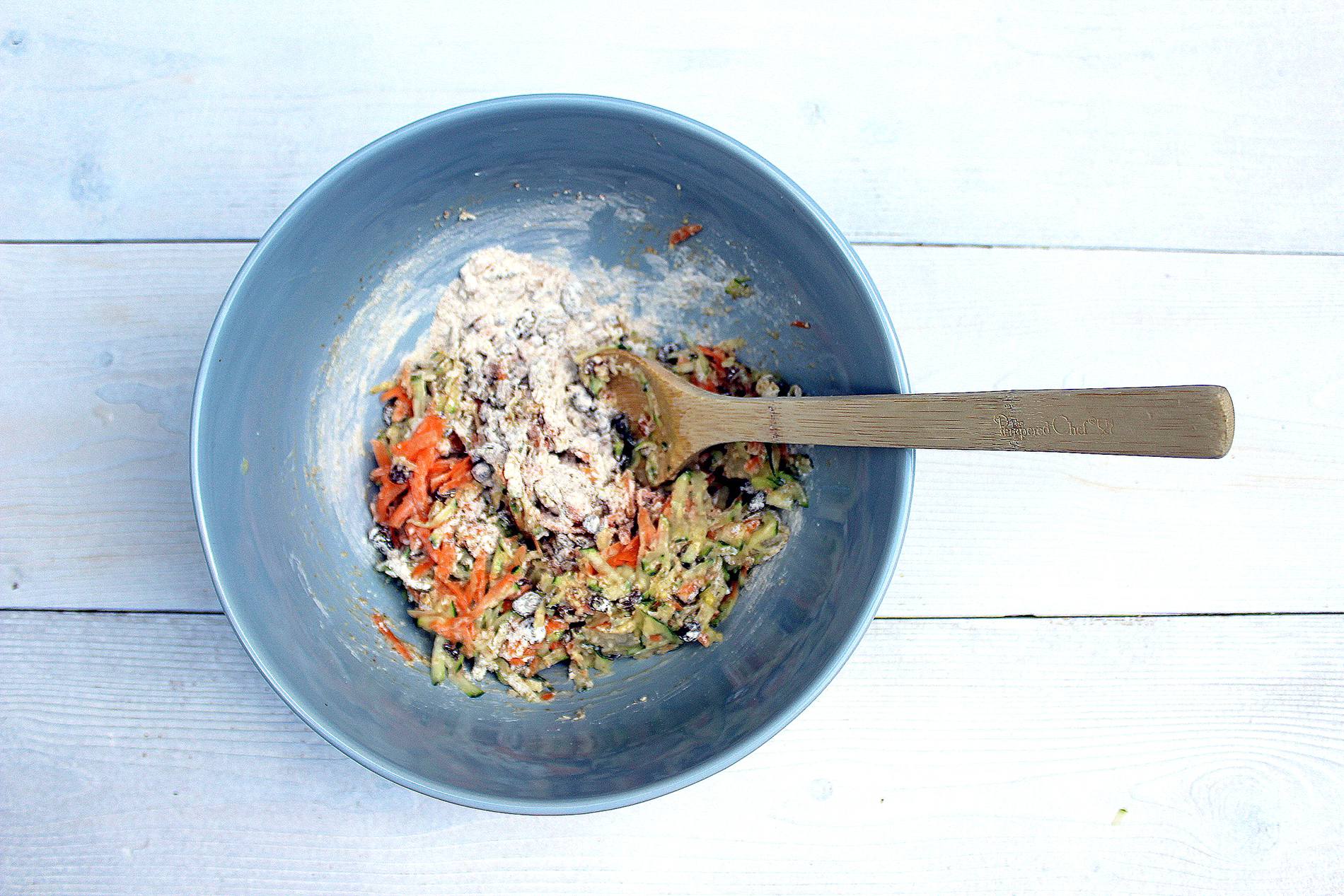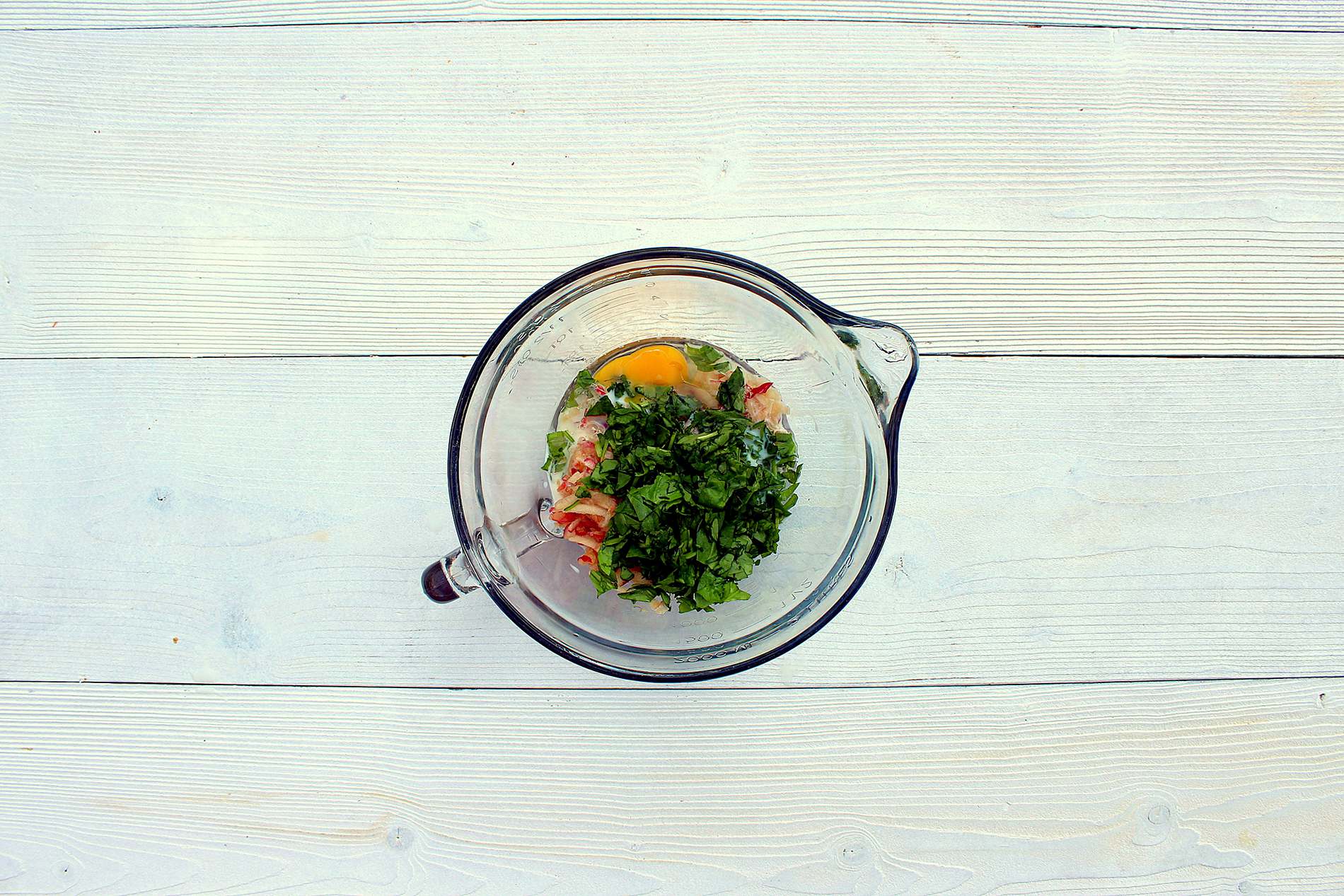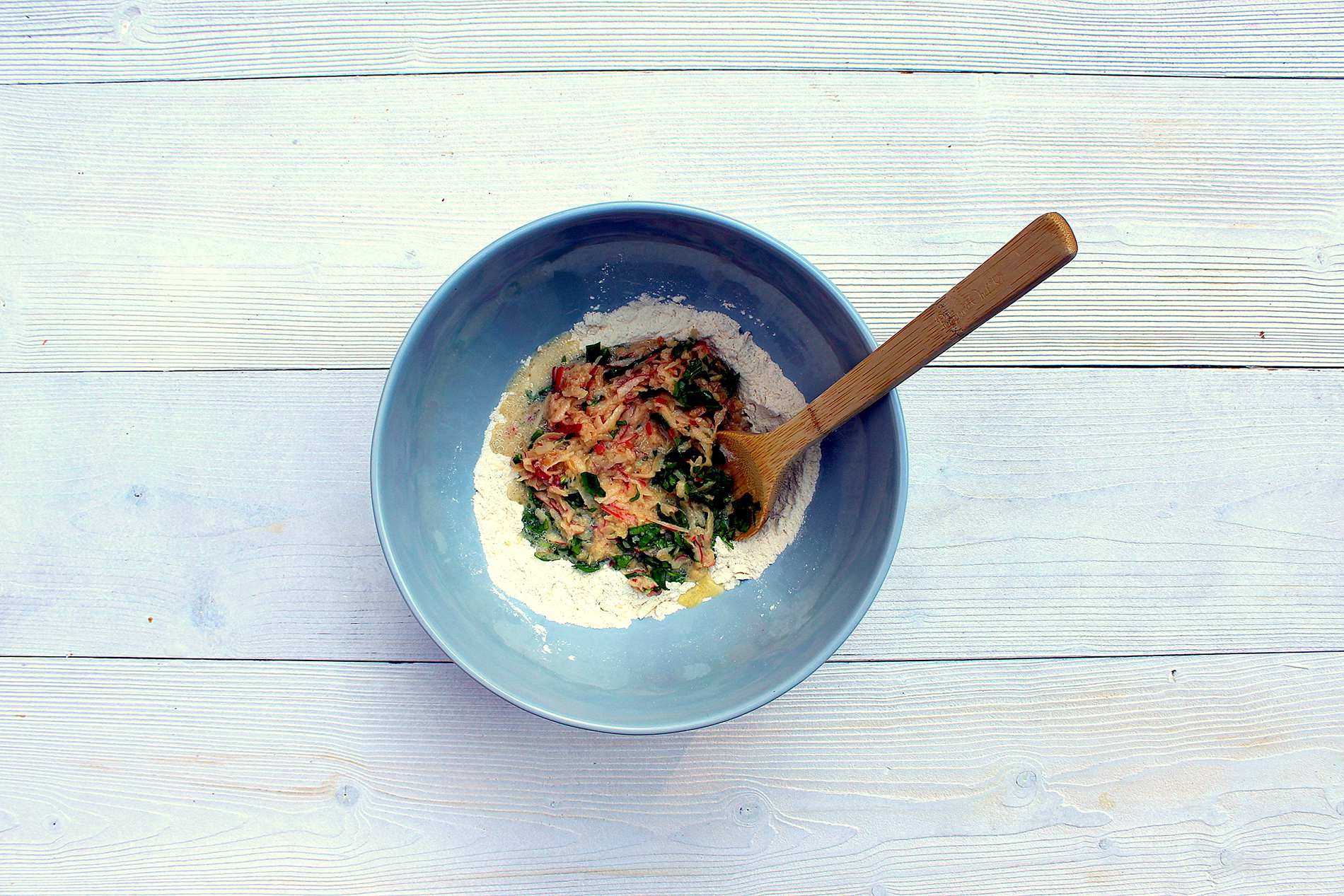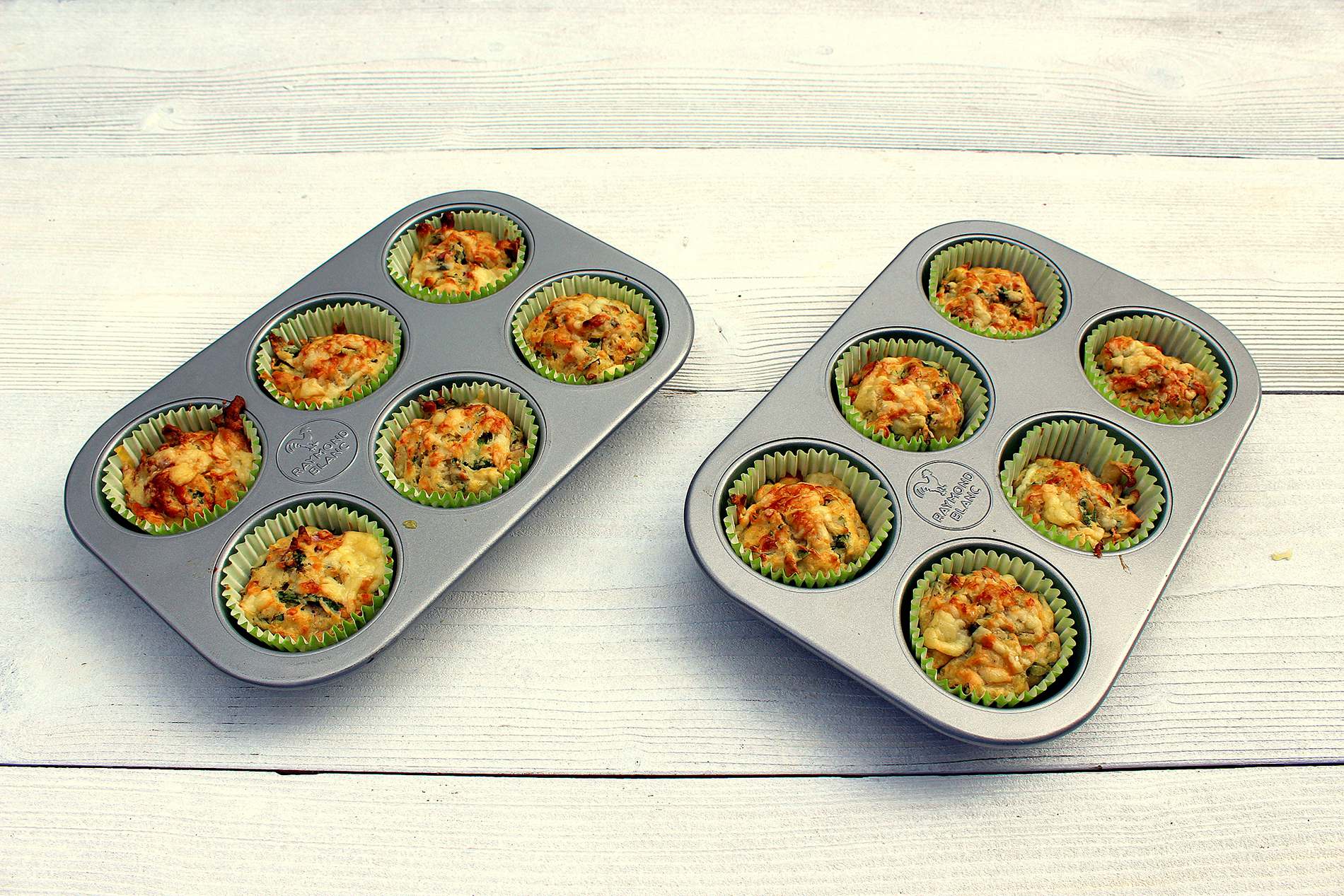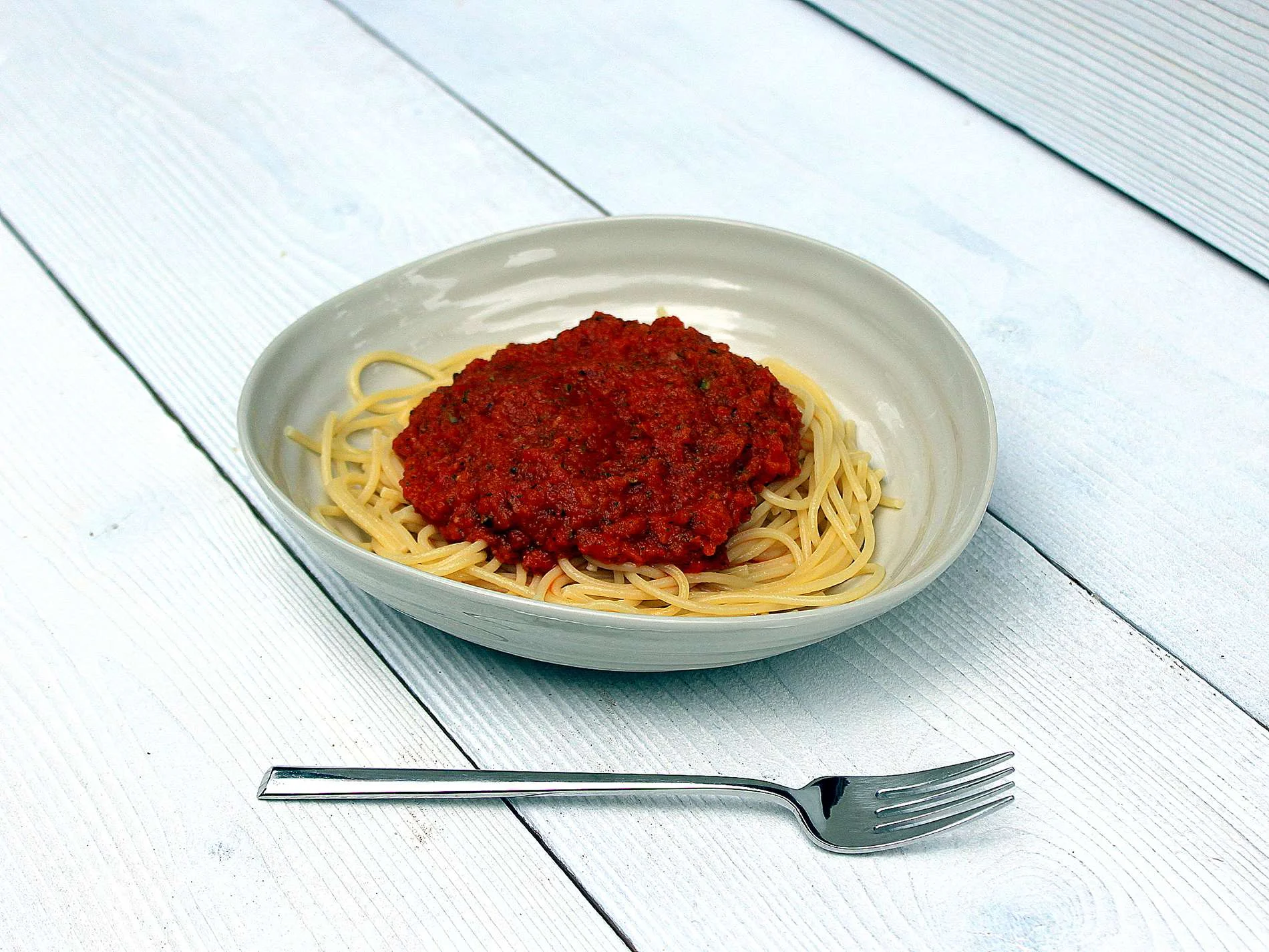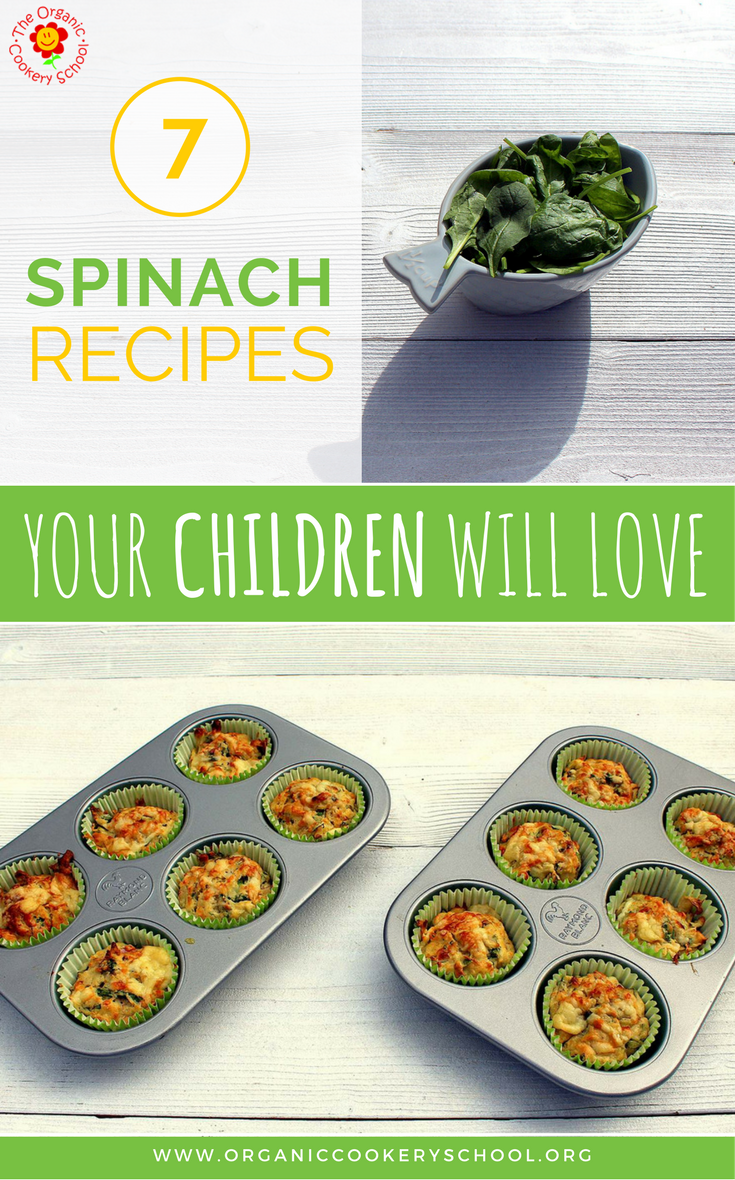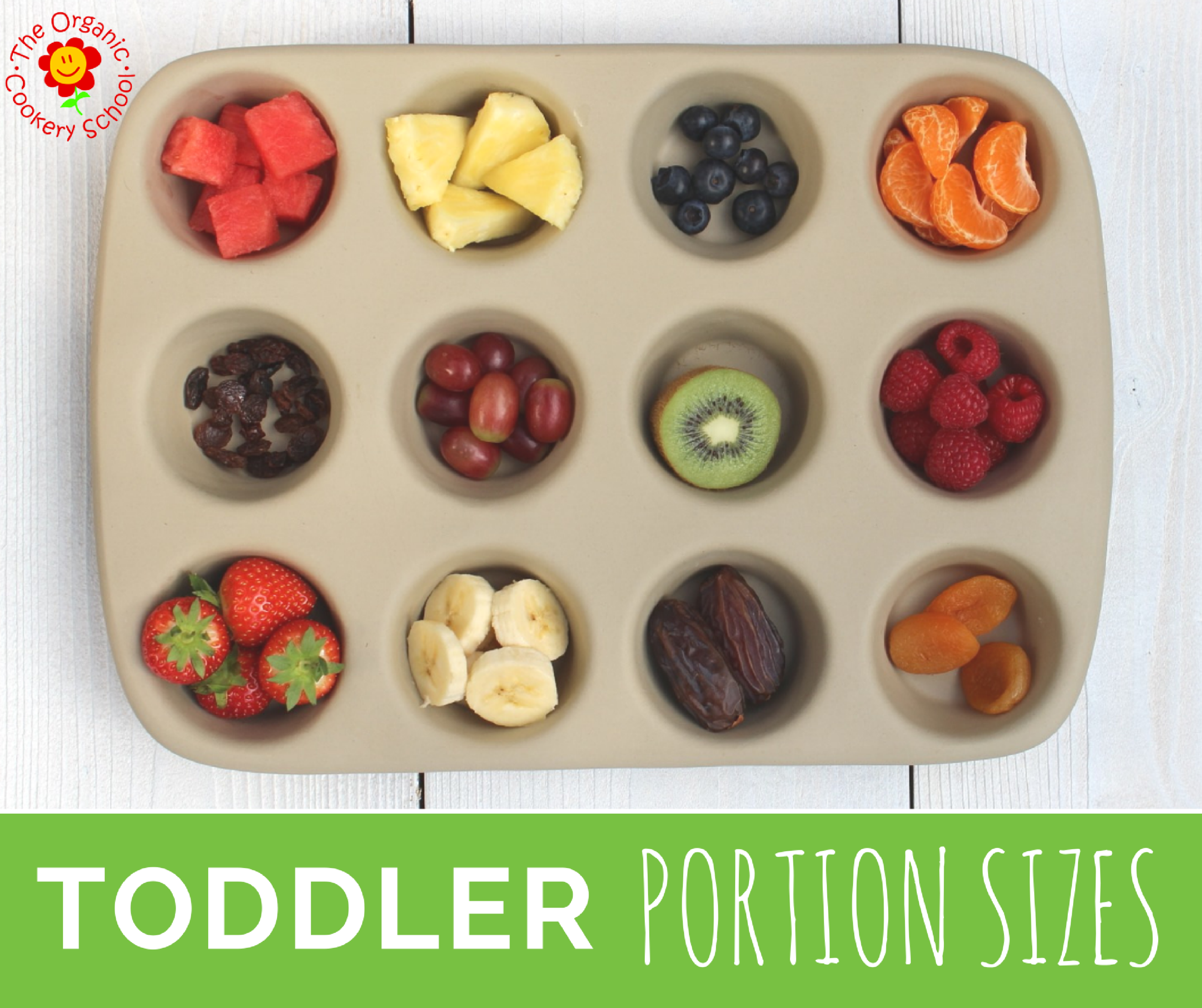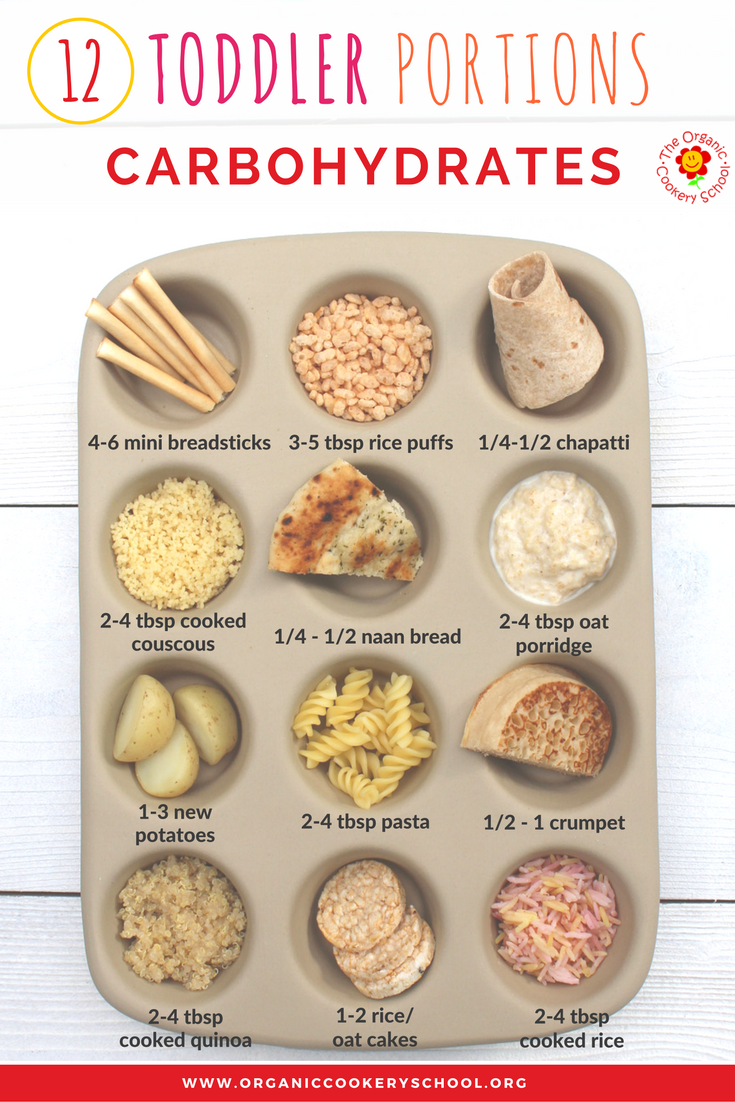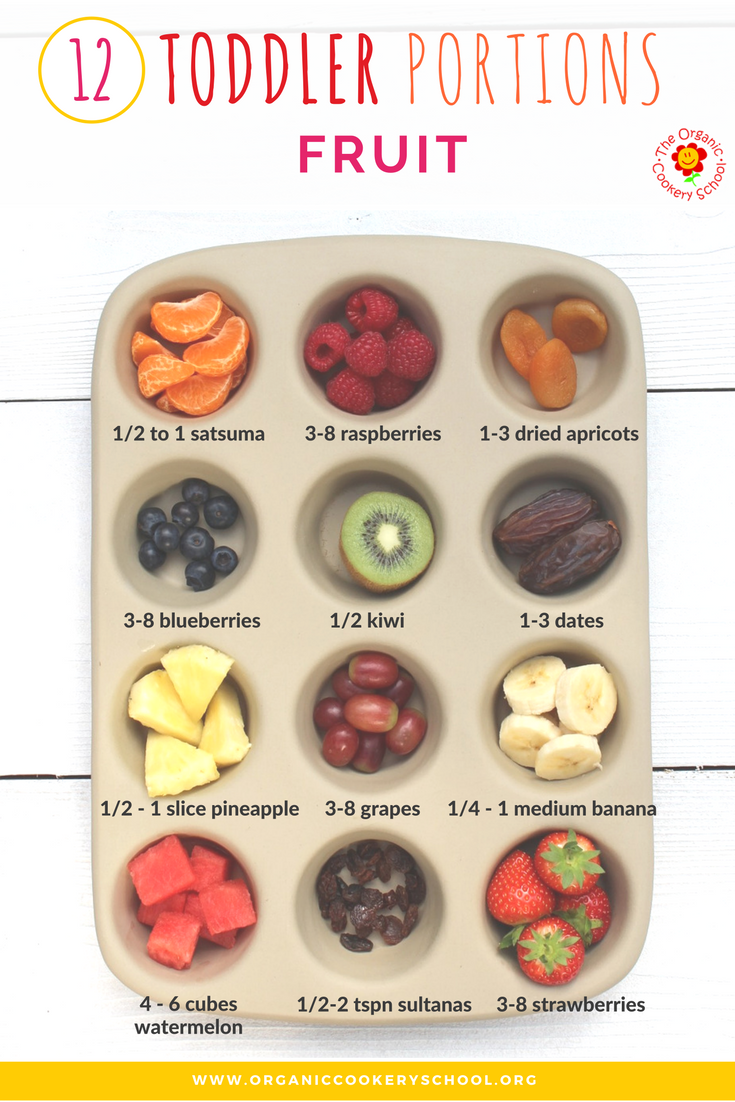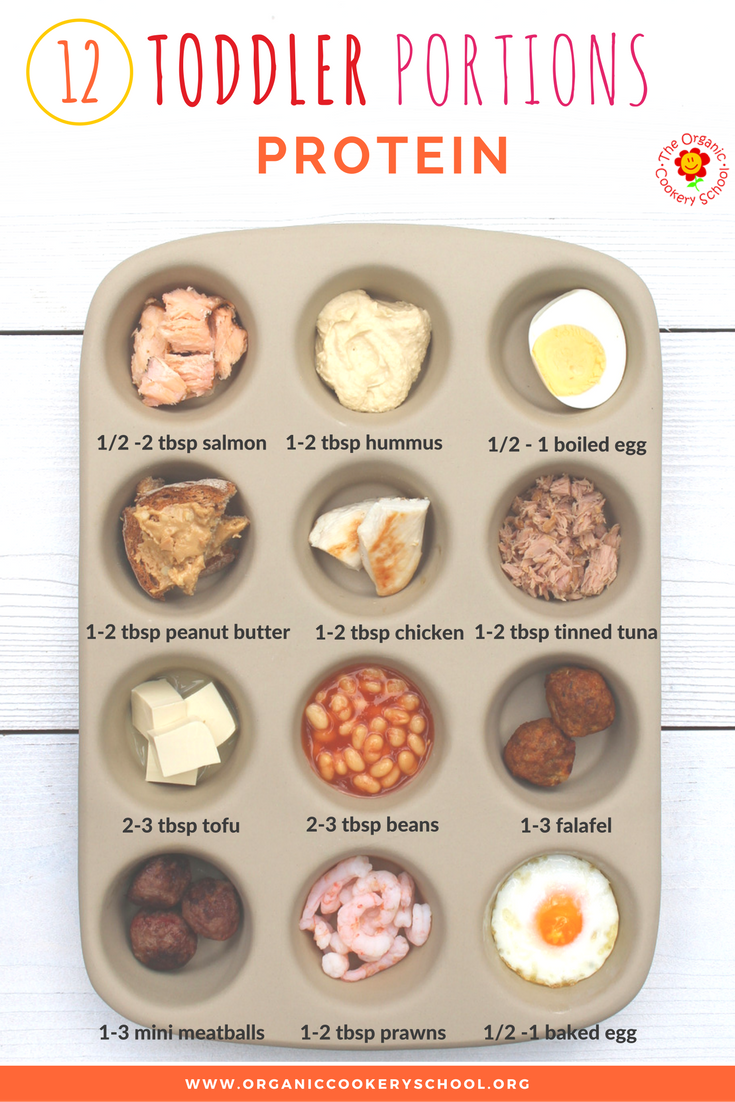ALentil Shepherd’s Pie - a vegetarian family favourite as featured in our Knorr meat-free masterclasses.
Cheesy Broccoli Quinoa Bites
makes 20-24 bites
Babies and toddlers love to be independent and will feed themselves as soon as they are given the chance . Perfect for baby-led weaning, and a healthy lunchbox treat for older kids, you can offer these knowing they are the perfect hand held snack.
These portable nutrition bombs contain quinoa, a unique grain containing all of the essential amino acids that the body needs, which is also naturally high in fibre, B vitamins and magnesium as well as vitamin rich broccoli, eggs and cheese for protein.
They freeze really well too. Enjoy!
N.B. Children should always be supervised when cooking, and an adult should oversee the use of heat as well as all preparation involving sharp utensils.
Try something different
Try mixing finely chopped carrot or raisins instead of broccoli
Did you know?
Quinoa is a gluten-free wholegrain
You can get white, red or black quinoa.
White quinoa will cook to be the fluffier, whilst red and black will cook to be a little more crunchy.
Quinoa has the perfect balance of all nine amino acids essential for human nutrition, and provides a good amount of fibre and iron.
*Percent Daily Values are based on a 2,000 calorie diet for an adult. Your daily values may be higher or lower depending on your calorie needs. Infants and Toddlers will need less calories according to their age.
Click here for advice on how many calories your child needs.
Bread and Butter Pudding Muffins
MAKES 16 MUFFINS
Lunch box staple and after school treat. These never last long in our household and are ideal to cook with little ones. Great for using up stale bread and a portable form of bread and butter pudding. Need we say more?
Did you know?
These muffins are full of calcium (good for your bones) and contains very little added sugar because of the natural sweetness of the dried fruit.
Cheese, Leek and Potato Pie
Here’s a popular dish from our Cooking with Dad project and afterschool clubs. Using cheap winter veg, tasty cheese and dried herbs, it’s inexpensive to make and delicious. You children will love getting creative with the pastry scraps too – so make sure there’s plenty left for all their decorations.
N.B. Children should always be supervised when cooking, and an adult should oversee the
use of heat as well as all preparation involving sharp utensils.
Try something different
Try using alternative vegetables in this pie. Peppers, sweetcorn, courgettes would all work well.
Did you know?
- Cheese contains both protein and calcium – something we all need for growth and development.
- For other interesting facts about cheese visit: www.britishcheese.com
Pear and Chocolate Pudding
serves 4
Low sugar and using store cupboard staples, this is perfect when you need a healthier chocolate pudding for the family. This goes down a storm in our community cookery classes and we’ve heard reports of it being served at fancy dinner parties. If you’re feeling indulgent throw in some extra dark chocolate chips ☺
Tip:
Younger children may prefer their pear cut into smaller chunks.
Optional chocolate sauce recipe:
Break 150g dark chocolate into pieces and melt in a bowl over simmering water, add a tablespoon of honey and a knob of butter and stir until combined and glossy. Slowly whisk in 100ml of warmed (but not boiling milk). Can be made in advance and reheated when ready.
Did you know?
- Pears are good source of dietary fibre, vitamins C and K and minerals such as copper and potassium.
- There are over 3000 varieties of pears grown around the world.
*Percent Daily Values are based on a 2,000 calorie diet for an adult. Your daily values may be higher or lower depending on your calorie needs. Infants and Toddlers will need less calories according to their age.
Click here for advice on how many calories your child needs.
Summertime Soup
serves 3 – 4
Try this if you’re making our potato, pea and mint puree for baby – it’s delicious and delightfully green. Also known as Mean Green Soup, we’ve yet to meet a child who doesn’t ask for seconds. And we’ve heard that lettuce has soporific qualities – perhaps a good sleep inducing supper.
N.B. Children should always be supervised when cooking, and an adult should oversee the use of heat as well as all preparation involving sharp utensils.
Try something different...
- This basic soup can be varied with whatever vegetables are in season. Swap potato for sweet potato, butternut squash or pumpkin, and onions for spring onion or leek.
- For information about what’s in season visit: www.eattheseasons.co.uk
Did you know?
- Soups can be thick or thin. A thin, clear soup is often referred to as a consommé.
- The potatoes and peas in this recipe which are blended together give this soup a thick consistency which is filling and satisfying.
Sweet Potato and Orange Muffins
makes 12-18
The apricots in this mix make these muffins – which are low in added sugar and full of natural sweetness from sweet potato, carrots, orange juice and dried fruit. We made them in standard muffin cases here, but they are perfect as mini muffins too – split the mix and have some mum and baby/toddler-sized ones. Perfect for lunchboxes and freezable.
* Adult supervision is required for all chopping, and use of ovens.
Did you know?
- Sweet potatoes are an excellent source of vitamin A (in the form of beta-carotene).
- They are also a good source of vitamin C, manganese, copper, pantothenic acid and vitamin B6. Additionally, they are a good source of potassium, dietary fibre, niacin, vitamin B1, vitamin B2 and phosphorus.
Try this!
Swap chopped apricots for any other favourite dried fruit – cranberries, raisins, even chopped prunes!
Tomato and Paprika Biscuits
makes 20 small biscuits
There’s something pretty unique about these biscuits – our very anti-tomato 10 year old loves them! As does pretty much everyone who’s made them in our community classes (even fussy eaters!) They can be thrown together in minutes, require pretty much store cupboard staples (just need to make sure you have a couple of spring onions to hand) and are perfect blw or lunchbox staples.
* N.B. Children should always be supervised when cooking, and an adult should oversee the use of heat as well as all preparation involving sharp utensils.
Did you know?
- The English word “tomato” comes from the Aztec word, “tomatl”. Tomatoes are full of health: A good source of vitamins A, C and E tomatoes also contain potassium which may help lower blood pressure and calcium which is vital for healthy bones and teeth.
- To read more about the humble tomato visit: www.britishtomatoes.co.uk
*Percent Daily Values are based on a 2,000 calorie diet for an adult. Your daily values may be higher or lower depending on your calorie needs. Infants and Toddlers will need less calories according to their age.
Click here for advice on how many calories your child needs.
10 Steps to More Veggies: Chocolate and Beetroot Muffins
Over the summer hols, we ran our first online challenge for parents who’d previously attended or signed up for info on our courses. 10 Steps to more Veggies is a five week e-course which aims to inspire and support parents to cook more with their children and when better to test it out than over the long school summer holidays.
We featured 10 of our more popular veggie smuggling recipes and support from tutors and other families through a private Facebook group. Everything was kept pretty low key, as we were testing our new e-course platform but were thrilled when 100 families signed up within a week.
Today we’re featuring the hands down favourite recipe of the course (although there were no losers!) Everyone loves this recipe and it’s a great lower sugar treat for your family, which your little ones will LOVE making with you. We’ve been known to polish a few off with a pot of tea.
Chocolate and Beetroot Muffins
makes 16 muffins
* Adult supervision is required when using sharp objects (graters, knives) and the oven.
Tip:
Grating beetroot can be tricky (and messy). Try disposable rubber gloves!
Try something different...
- Try sultanas, chopped prunes or apricots instead of cranberries
- Wholemeal flour works well in this recipe
- If you can’t find beetroot, finely grated carrot could be used in its place.
Courgette, Pear and Carrot Cakes
makes two small loaves or 8 - 10 muffins
Here’s another low sugar lunchbox treat, which the kids will love making. Dead simple, packed with veggies and naturally sweet with very little added sugar. We regularly make these in our Little Foodies toddler cookery classes, and everyone loves them.
Need any further excuse to try them?
Carrots are rich in beta carotene which is converted in the body to vitamin A. This nutrient is used to strengthen the immune system and to ensure good eye health. Courgettes are also a good source of vitamins A and C, as well as folate and potassium and fibre, which help to ensure a healthy bowel and prevent constipation in little ones.
*N.B. Children should always be supervised when cooking, and an adult should oversee the use of heat as well as all preparation involving sharp utensils.
Try something different
- Try changing the pear for another fruit or your choice. Apples, plums and peach would work well.
Did you know?
- Courgette (also known as Zucchini) contains more potassium than bananas and are a rich source of vitamin C and manganese.
- Carrots although usually orange in colour can also come in purple, red, white, and yellow varieties.
- The human body turns beta-carotene from carrots into vitamin A. Vitamin A is important for the health of our vision (including our night vision) as well as our bones, teeth and skin.
*Percent Daily Values are based on a 2,000 calorie diet for an adult. Your daily values may be higher or lower depending on your calorie needs. Infants and Toddlers will need less calories according to their age.
Click here for advice on how many calories your child needs.
Cheesy Spinach and Apple Muffins
Perfect for babies and toddlers
If your children are bored of sandwiches, these are great in lunchbox ( perhaps with some cooked chicken or a boiled egg for extra protein). Loved by toddlers, fussy eaters and baby-led weaners they freeze perfectly and are our secret weapon for sneaky some extra veggies into our little ones diets. We’ve made these as full sized muffins, but they work just as well as mini muffins for babies and toddlers.
*Percent Daily Values are based on a 2,000 calorie diet for an adult. Your daily values may be higher or lower depending on your calorie needs. Infants and Toddlers will need less calories according to their age.
Click here for advice on how many calories your child needs.
Cheesy Courgette Bake
to serve 2 adults or 4 children (double quantities for a bigger family)
Another toddler friendly veggie smuggling dish – get your kids grating the courgettes and squeezing out the excess water, and throw in some cooked new potatoes for a substantial veggie side. Perfect for BBQs or summer lunches, just double or triple the quantities to feed a family.
Try something different:
- Swap sweetcorn for peas, and add a teaspoon of chopped mint.
- Or added cooked new potatoes or cooked bacon to make a meal.
Did you know?
- Courgettes (also known as zucchini) are rich in Vitamin A and potassium. They are normally a bright dark green but can also be golden yellow.
*Percent Daily Values are based on a 2,000 calorie diet for an adult. Your daily values may be higher or lower depending on your calorie needs. Infants and Toddlers will need less calories according to their age.
Click here for advice on how many calories your child needs.
Magic Tomato Sauce
serves 4 as a pasta sauce
Another recipe on our ‘most popular list’. This basic tomato sauce is packed with flavour and can be blended smooth or chunky depending on your family’s preferences. It’s a great base for pizzas, pasta, bolognaise, lasagne, chilli and anything needing a rich tomato base. And look at the veggies we are sneaking in!
Serving suggestion:
Delicious served over pasta. Makes an excellent tomato base for pizzas. Can also be used as a sauce for chicken or fish or used as a dip for vegetables and pitta bread. Freezes well.
Try something different…
- Add other coloured peppers, aubergine, celery, a handful of parsley and /or basil to your sauce… a great way to get children eating some healthy veg.
- If you don’t have balsamic vinegar, substitute for a tablespoon of sugar.
Did you know?
- Tomatoes are a great source of vitamin A and C.
- Although the tomato is closely associated with Italian and Mediterranean cooking, the tomato originally comes from America and was only first introduced to Europe in the 16th century.
- For more information about tomatoes visit: www.thetomatozone.co.uk
*Percent Daily Values are based on a 2,000 calorie diet for an adult. Your daily values may be higher or lower depending on your calorie needs. Infants and Toddlers will need less calories according to their age.
Click here for advice on how many calories your child needs.
7 Spinach Recipes Your Children Will Love
Whilst available all year round, the UK spinach season is March - June. Often lauded as an iron-rich superfood (just think Popeye), it is also rich in vitamin K, vitamin A, vitamin C and folic acid, and a good source of calcium, manganese, magnesium, iron and vitamin B2.
Iron is important for making red blood cells, which carry oxygen around the body, and children need vitamin K to help normal blood clotting and to heal cuts and scrapes.
So what’s the best way to sneak this supercharged leaf into your family’s diet?
Blend it!
Spinach works brilliantly in smoothies and fresh juices. Blend with mango, strawberry, or banana which will mask it’s peppery leaves.
Add it to potatoes, cream and garlic (yum!). Here are two amazing dauphinoise recipes which include spinach.
Sweet potato and spinach bake GoodFood
Spinach and potato gratin Tesco RealFood
Blitz it in a homemade spinach and basil pesto (then stir through pasta, smear on bruschetta, serve with grilled fish or chicken)
Speedy Spinach Pesto by Mama's Kitchen on Food.com (Photo: May I Have That Recipe)
Pack it into some toddler sized mini muffins
Spinach Banana Healthy Muffins Tribe Magazine
Or our very own Cheesy Spinach Muffins
Want to find out more about the story of spinach?
Our friends at How Does it Grow share the fascinating story of a floating hydroponic spinach farm.
7 Courgette Recipes Your Children Will Love
Courgettes (or Zucchini) are prolific in the UK from June to September. They have a high water content, significant levels of Vitamin C and potassium and are a good source of soluble fibre (which reduces risk of constipation and promotes a healthy bowel).
They are a member of the cucurbit family, and are related to watermelons, gherkins and cucumbers.
Their pretty edible flowers are delicious stuffed with goats cheese, herbs and tomato and deep fried.
Our favourite family friendly courgette recipes:
Pear, Carrot and Courgette Muffins Organic Cookery School
Cheesy Courgette Bake Organic Cookery School
Magic Tomato Sauce Organic Cookery School
Courgette Polpette Hugh Fearnley-Whittingstall via The Guardian
Zucchini Bread Pancakes Smitten Kitchen
Hidden Veggie Sausage Rolls My Fussy Eater
Frosted Courgette and Lemon Cake Jane Hornby via GoodFood
Toddler Portion Sizes – Ideas and Strategies to Ensure Your Toddler’s Diet is Balanced and Varied.
There’s no doubt that when babies become toddlers, everything changes – they’re more mobile and engaged, their motor skills are developing at a rate of knots and whether speaking just a little or a lot, they soon start to communicate their preferences and dislikes to you. And that includes what they want to eat.
The Organic Cookery School offers a number or practical courses which support parents in the next stage of meeting their child’s changing nutritional needs. As well as recipe ideas, these courses are as much about how to deal with the challenges you may face and how to get your child’s relationship to food off to the best possible start.
So how much and what should my toddler be eating?
Whatever our age, we all need variety and balance in our diets, to ensure we are getting the right mix of nutrition. Toddlers tend to have smaller tummies, so appropriate portion sizes are important to make sure they aren’t filling up on just a few food types:
The amount of food your child will want to eat at any given time will depend on so many factors – are they having a growth spurt? Have they just done a big poo? Are they tired? How much exercise have they had today? So offer small portions and top up with seconds, if they are still hungry.
Each meal should offer a mix of the main food groups:
Starchy/Carbohydrate rich foods (up to 5 portions a day)
Fruit and Vegetables (aim for at least 5 portions a day)
Dairy/calcium rich foods (aim for three portions a day)
Protein foods (aim for two portions a day, or 3 if vegetarian)
Over the next few blog posts we’re going to explore each food group in more detail and give examples of recipes which are perfect for toddler tums.
Recipes:
Our Cheesy Spinach and Apple Muffins are a great mix of dairy, veg, fruit and protein and a hit with our little foodie testers.
A note on drinks and what foods to avoid:
During the day time, your toddler will need to remain hydrated and water should be offered frequently from a cup or beaker. They can also drink full fat cow’s milk from one year and need approx 300ml a day. Squashes, sweetened juices and fizzy drinks should not be given to children and can impact dental health. We have created some toddler friendly whole fruit/veg smoothies, which are a great way to boost your families’ vitamin and mineral intake, but bear in mind that, like milk, they can be quite filling. Try a small (150ml) portion of smoothie at breakfast with some toast and scrambled egg for a great start to your toddler's day.
Avoid, raw or very lightly cooked eggs, high salt foods (or the addition of salt), whole nuts (until the age of 5), low calorie or diet foods, raw fish or meat (eg sushi/steak tartare).
